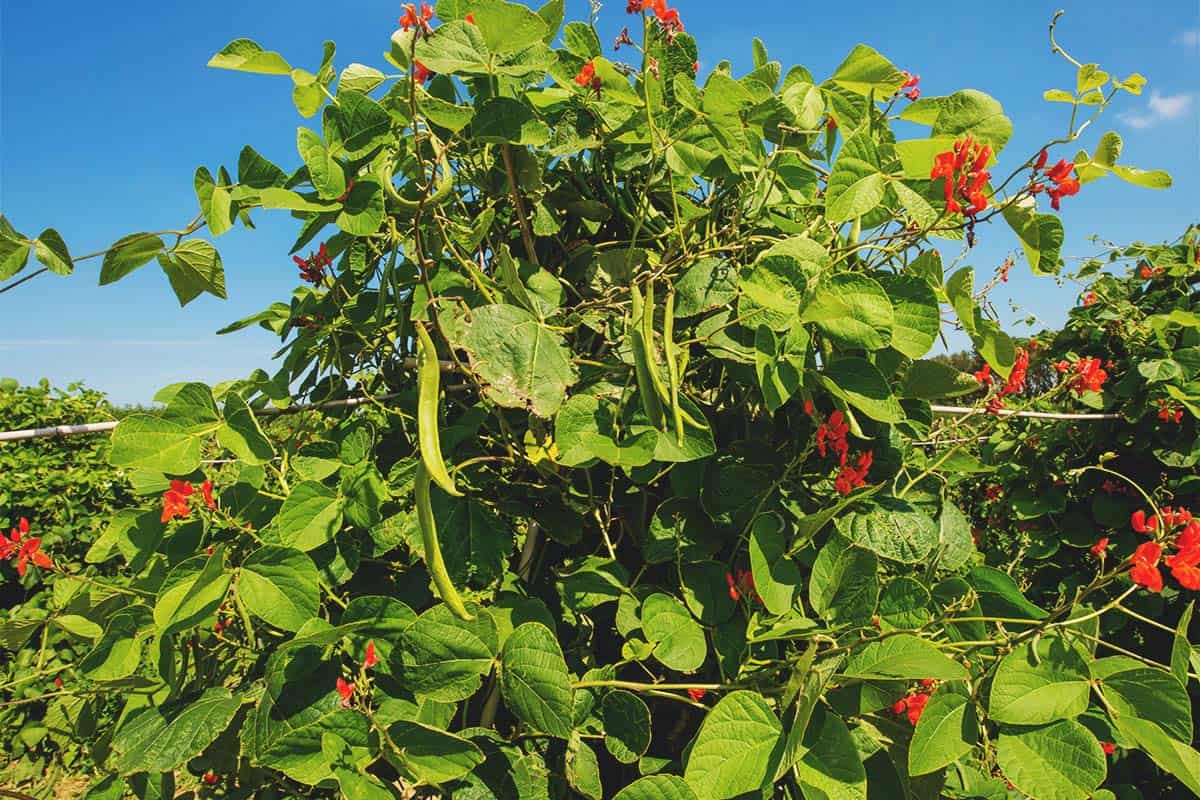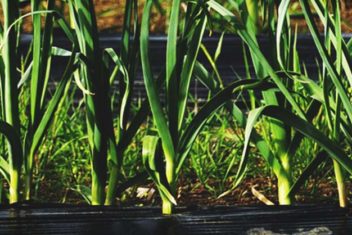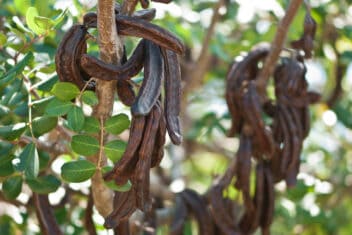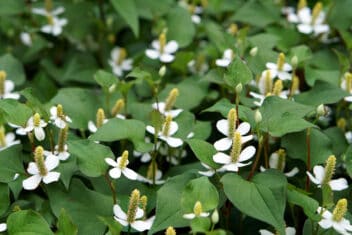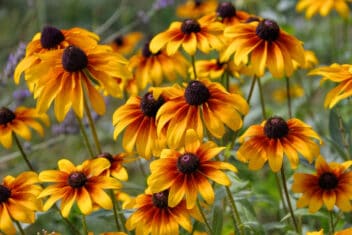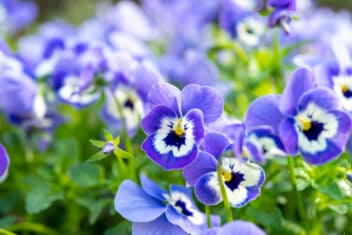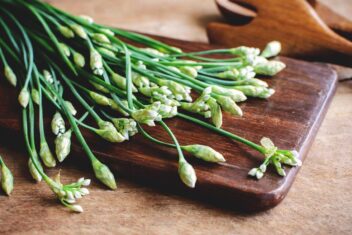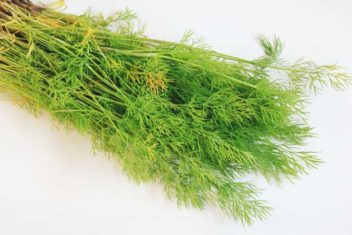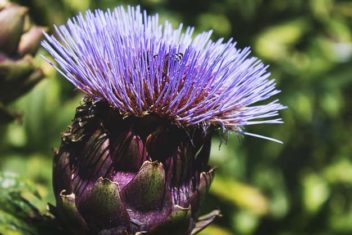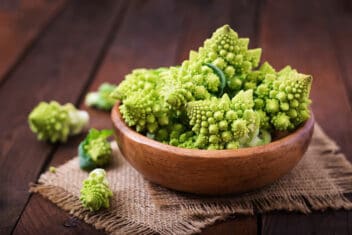Until recently, you’d typically only find runner beans in British gardens, but now, they claimed spaces in gardens all over the world. It’s easy to see why. These tall vines produce colorful flowers and beans, acting as an edible and ornamental plant in your garden. If you’ve ever had green beans in your garden, then growing runner beans will be a piece of cake.
This last growing season was the first time I grew runner beans. I opened a gardening catalog to a gorgeous photo of vines draping an arch with red flowers and green pods dangling downward. I knew I needed to give them a try if only to add a unique look to my garden.
I learned that runner beans are easy to grow and attract plenty of attention. Nearly every person who stopped by my garden asked about them.
Are you ready to learn how to grow runner beans? I thought so! Keep reading.
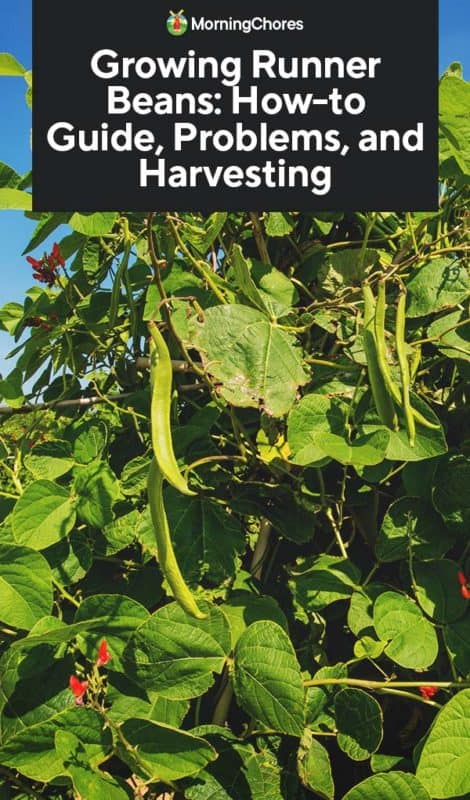
Runner Beans vs. Green Beans
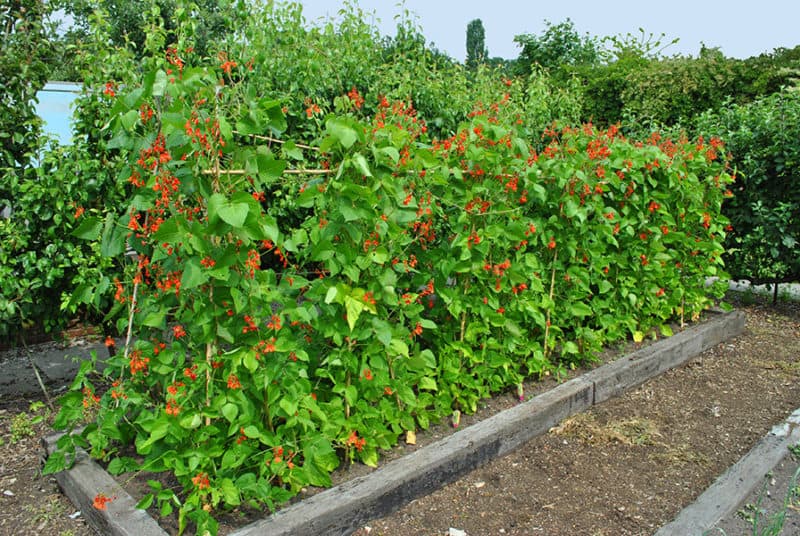
Taking a look at them side-by-side, it might be hard to notice a difference between runner beans and green beans – and don’t forget pole beans, soybeans, and string beans! That’s a lot of beans, each with their own unique characteristics.
Runner beans look like a larger version of green beans. There are a few other differences besides the size, though.
- Runner beans are a perennial plant, and green beans are annuals.
- When a runner bean seed starts to grow, the stem and first set of leaves emerge from the ground first. When green beans grow, the two halves of the seed appear first.
- The vines on a runner bean plant twist clockwise, but green bean vines rotate counterclockwise.
- From a gardening point of view, runner beans double as an ornamental plant, producing flowers that are an inch long, typically in an orange or red color, with 20 or more flowers to a stalk.
- Runner bean pods measure anywhere from 6-12 inches long with 6-10 beans inside. Each bean is an inch long.
Are Runner Beans Edible?
Some people might tell you that runner beans aren’t edible, but they’re wrong. Runner beans are not only something you can eat, but they’re delicious. They were a customary food in the early American colonies and Britain, so plant and eat away!
The Best Varieties of Runner Beans
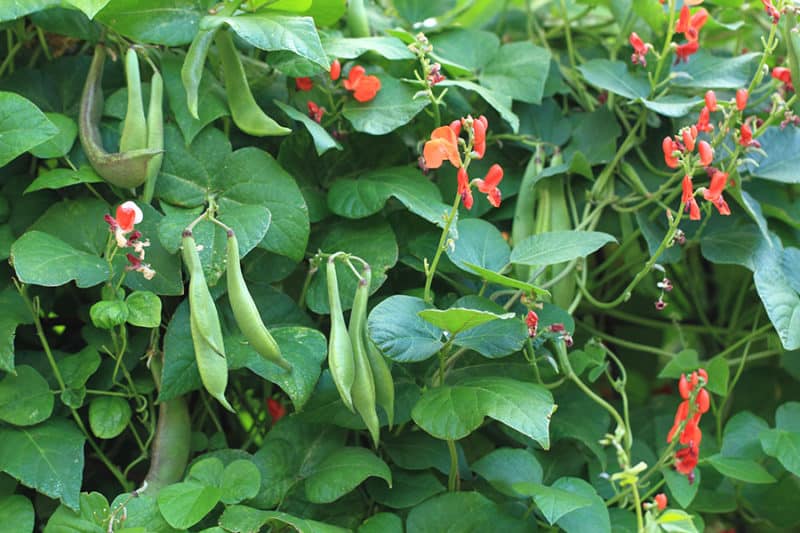
Runner beans differ in the color of flowers they produce. Most varieties grow either scarlet-colored or white flowers. The scarlet runner beans look more orange than red.
Here are a few varieties you might want to try.
- Scarlet Emperor: This variety is similar to the scarlet runner, producing orange-red flowers, but the pods are fatter.
- Scarlet Runner: This is the most common variety – it produces bright red flowers. It’s a vigorous vine that reaches over 10 feet tall and produces enormous seeds.
- Sunset Runner Beans: This variety produces blooms that are peach to shell-pink. The vines reach 6 feet tall and are packed with pods.
- Black Coat: This is an heirloom runner bean dating back to the 1600s. The blooms range from tangerine to cherry red, and the pods are shorter than other varieties.
How to Plant Runner Beans
These beans are native to Central and South America, but they grow well in a variety of climates. Many gardeners find that they germinate better in cool soil rather than the hot soils found in their native lands. Remember that these plants are perennials, but they’re usually grown as annuals. If you live in an area with mild climates, they can over-winter.
Here is what you need to know about growing runner beans in your garden.
The Right Location for Runner Beans
Make sure that you pick a site with full sun, and you need a location that offers some type of support for the plants to climb on. Trellis or teepees are options, along with metal arches.
An even bigger bonus is if you pick a spot that has plenty of pollinating insects, which are essential for the plants to set pods.
Preparing the Soil to Grow Runner Beans
These beans require the same soil as green beans. You want to plant them in moderately fertile soil that is amended with plenty of organic matter. Mix in some compost or well-rotted manure several weeks before you sow your beans.
Runner bean flowers set better in alkaline soil. If your ground is neutral or acidic, try adding some lime.
When to Plant Runner Beans
You have two options. First, you can direct-sow the beans outside after the damage of frost passes. The second option is to start the seeds indoors 4-6 weeks before you plan to move them out. Most importantly, remember that runner beans are a tender plant and don’t like the frost.
Starting Runner Beans Inside
Typically, most gardeners opt to direct sow beans because they grow fast and don’t transplant well. Beans don’t like their roots to be disturbed, but if you have a short growing season, starting the plants inside gives you a head start.
If you decide to start them indoors, plant the beans in peat or paper pots. Use a seed starting soil and keep them well watered until it’s time to set them outside. These seeds need warm conditions to germinate, around 54℉, and they take 7-10 days to germinate.
Make sure you harden the seedlings off for a week before transplanting them outside. The seedlings should be around 3 inches tall, and you have to wait until any danger of frost passes.
Planting Runner Beans in the Garden
Direct sowing the beans into your garden is the easiest choice. Wait until the ground warms up before planting outside. Plant two or three seeds at the corner of each teepee or space the seeds six inches apart along a trellis or an arch.
Runner beans germinate quickly, so you need to train them to grow along the support system as soon as you see the tendrils appear. Direct them to the support system and soon, they’ll figure it out and climb on their own. All you need to do is loosely tie the plants to their supports. Simple, right?
How to Care for Runner Beans
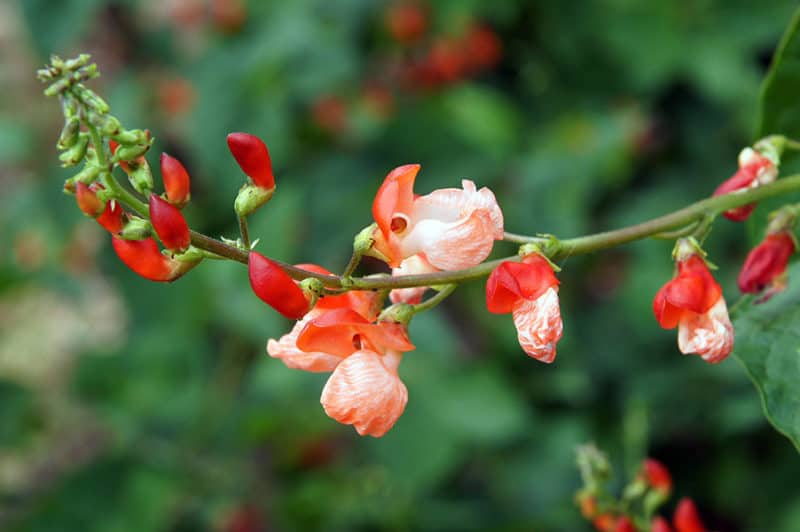
Watering
Runner bean vines need to stay well-watered. Make sure you don’t let them dry out by watering them throughout the week. Otherwise, they’ll die.
Mulching
One of the best was to ensure these plants stay well-watered is by mulching around the roots. Not only does mulch keep the roots cool, but it also helps to reduce how many times you need to water your plants each week.
Fertilizing
Typically, runner beans don’t require too much fertilization. You can apply a side dressing of compost mid-season to help give them a boost throughout the growing season. That can help give them the final push needed to produce a bountiful harvest.
Common Pests and Diseases for Runner Beans
Here are a few pests and diseases you might encounter.
Black Bean Aphid
These are sap-sucking aphids that destroy and disfigure your plants, stunting the growth of the leaves and stems. Typically, if you have an aphid infestation, you need to knock them off of the plant with a strong jet of water. You can pinch off the infested parts of the plant as well. Then, spray plants with neem oil to keep the pests from returning.
Slugs and Snails
These pests love to feed on young seedlings. You’ll find a slime trail on the soil around your crops, as well as the leaves. Gardeners can try many ways to control slugs and snails, such as barriers, copper tape, and sawdust.
Bean Rust
At first, bean rust might appear as small yellow or white spots on the leaves, and then the spots enlargen. Raised brick-red pustules develop, surrounded by a yellow halo, and you might have premature leaf drop in severe cases.
This fungus can be hard to treat, so you need to remove and destroy the infected crop debris. Use crop rotation to help decrease the fungus. In severe cases, you might need to spray a fungicide.
Bacterial Blight
If you notice water-soaked spots on the growing runner bean leaves that become necrotic, you might have bacterial blight. These spots might be surrounded by yellow discoloration. Eventually, the leaves die.
Make sure you only use certified seeds and treat seeds with appropriate antibiotics beforehand to kill off bacteria. You could spray the plants with a protective copper-based fungicide as well.
Harvesting Runner Beans
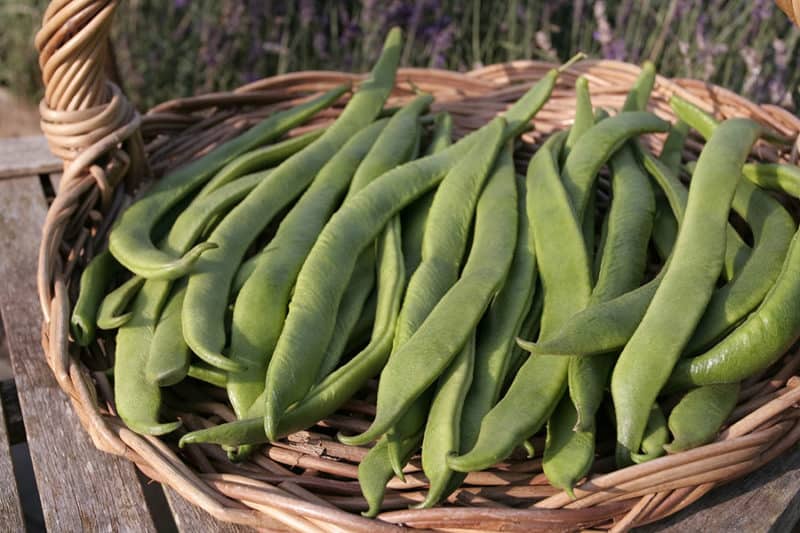
You can start harvesting when the pods are 6-8 inches long before the beans inside begin to swell. Those beans can get huge, so you don’t want to wait too long.
You must regularly pick to stop any pods from reaching maturity. Once that happens, the plants will stop flowering, and no more pods are set. If you pick pods regularly, you can expect the plants to produce a crop for eight or more weeks.
Before you cook these beans, you do need to make sure you boil them. Cut off the ends of the pods and bring water to a boil. Put the beans into the boiling water and cook for 2-3 minutes. Remove and place into cold water instantly, a process called blanching.
Growing Runner Beans
If you’ve never heard of runner beans before, now is the chance to add them to your garden. Not only are they ornamental, but they are a delicious veggie to put on your dinner table. Learning how to grow runner beans is worth it because you’ll love the flowers that cover the support system all summer long.
